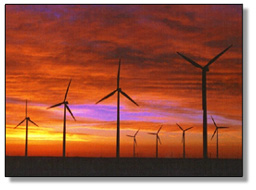
In September 2004, the U.S. General Accountability Office released an analysis,Wind Power’s Contribution to Electric Power Generation and Impact on Farms and Rural Communities, that dealt with a number of wind power and rural economic development issues. In light of the creation of a renewable energy program in the 2002 Farm Bill, the General Accountability Office was asked to examine:
- The amount of electricity generated by U.S. wind power and prospects for its growth,
- The contribution of wind power to farmers’ income and rural communities,
- The advantages and disadvantages for farmers of owning a wind power project, and
- The U.S. Department of Agriculture’s efforts to promote wind power in rural communities.
A brief summary of the findings:
- Wind power accounted for one-tenth of one percent of total U.S. electric generation in 2003. Most of the nation’s wind potential remains untapped.
- While wind power has not significantly contributed to total farm income, it has benefited specific farmers and communities where wind turbines are located.
- From a farmer’s perspective leasing land is easier than owning generation equipment. However, if the equipment is owned by the farmer, income could double or triple as compared to that generated by leasing the land.
- The U.S. Department of Agriculture has not implemented all aspects of the legislation such as loans and loan guarantees, and applicants have criticized the complexity of the grant application process and the brevity of the time frame allowed.